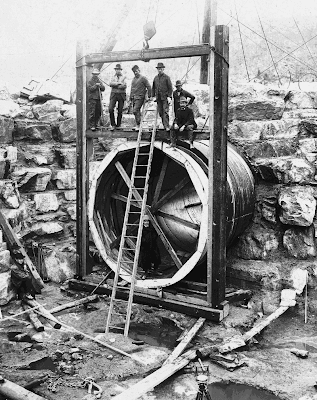 This Wednesday, June 22 at 7 pm, National Park Service Historian Duncan Hay will speak at the Chapman Historical Museum in Glens Falls, Warren County, on The History of Hydroelectric Power in Northeastern New York. The lecture is the third in a series funded by a grant from the New York Council for the Humanities and presented in conjunction with the museum’s summer exhibit, Harnessing the Hudson. The program is free and open to the public.
This Wednesday, June 22 at 7 pm, National Park Service Historian Duncan Hay will speak at the Chapman Historical Museum in Glens Falls, Warren County, on The History of Hydroelectric Power in Northeastern New York. The lecture is the third in a series funded by a grant from the New York Council for the Humanities and presented in conjunction with the museum’s summer exhibit, Harnessing the Hudson. The program is free and open to the public.
The speaker, Duncan Hay, works for the National Park Service as an historian and hydroelectric licensing specialist in the Rivers, Trails, and Conservation Assistance Program. He advises license applicants and the Federal Energy Regulatory Commission regarding protection of historic and archeological properties and outdoor recreation at hydroelectric projects.
Duncan also works as a cultural resources and museum specialist on planning teams for proposed new units and heritage areas of the National Park Service. Previously he worked for the Museum of American Textile History, and the New York State Museum as curator of industrial history. Duncan earned a Ph.D. from the University of Delaware’s Hagley Program in the History of Industrial America.
The author of Hydroelectric Development in the United States, 1880-1940, Mr. Hay will speak about the significance of Spier Falls dam and other early hydroelectric generators in the region. He also will address the rapid growth and consolidation of the industry during the first three decades of the 20th Century, leading ultimately to the formation of Niagara Mohawk.
The Chapman Historical Museum is located at 348 Glen Street, Glens Falls, NY. The exhibit Harnessing the Hudson will be on display through September 25th. Public hours are Tuesday – Saturday, 10 am to 4 pm , and Sunday, noon to 4 pm. For more information call (518) 793-2826 or go to www.chapmanmuseum.org.







